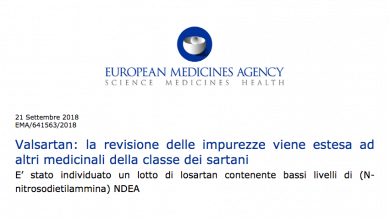
All results must be published, even negative ones. And then: detailed information on the protocol, the participants, the side effects of the drugs and the statistical tools used to analyze the data. All to respect the new watchword: transparency
 Transparency. This is the watchword of the new US regulations on clinical trials issued by the Department of Health and Human Services (HHS) and the National Institutes of Health (Nih) which will come into force starting next January 18th. Even the negative results will have to end in the light of day: everything will have to be published, even what will never end up on the market. Those who fail to do so will pay the sanctions provided for: first a letter of warning from the FDA arrived, now those who transgress risk up to 10,000 dollars a day or the withdrawal of public funding from the NIH.
Transparency. This is the watchword of the new US regulations on clinical trials issued by the Department of Health and Human Services (HHS) and the National Institutes of Health (Nih) which will come into force starting next January 18th. Even the negative results will have to end in the light of day: everything will have to be published, even what will never end up on the market. Those who fail to do so will pay the sanctions provided for: first a letter of warning from the FDA arrived, now those who transgress risk up to 10,000 dollars a day or the withdrawal of public funding from the NIH.
The crackdown, wanted by both institutions, aims to correct the distortions of the past: a survey conducted in 2014 on 400 randomly selected clinical trials showed that in 30 percent of cases, four years after the conclusion of the study, there is still no tracked the results. Many trials that failed in the early stages were not published at all. «And yet – explains on natures Christopher Gill of Boston University – from the perspective of consumers and scientists, failures are just as important as successes».
The 2007 law required anyone who started clinical trials involving humans to register on the portal ClinicalTrials.gov, the world's leading clinical trial database, and to describe the method and results of the research program. But there were so many exceptions and loopholes that total transparency became a mirage difficult to achieve.
 Robert Califf, head of the Food and Drug Administration (FDA) told Nature, "I think many universities miss the fact that if you conduct an experiment on a person who has given his consent, you have an obligation to make notice the results. It's basically a matter of ethics."
Robert Califf, head of the Food and Drug Administration (FDA) told Nature, "I think many universities miss the fact that if you conduct an experiment on a person who has given his consent, you have an obligation to make notice the results. It's basically a matter of ethics."
The new rules provide that registration a ClinicalTrials.gov is carried out within 21 days of recruitment of the first patients. The researchers won't be able to wait for the trial results to publish the data, but they will have to do it along the way. The trial project will then have to be revealed in all the details: how it will be carried out, which statistical tools will be used to analyze the results, any changes to the protocol decided during the course of work. All of this has a very specific purpose: to prevent the phenomenon of "p-hacking", which, in a nutshell, means building customized results. One of the ways to do this is to analyze the data with different tools and report only the favorable ones.
Also new: Researchers are required to report the race and ethnicity of participants. They also need to provide as much information as possible about adverse and side effects that occur more than 5 percent of the time. Some privately funded studies are exempt from the new rules: small trials that only serve to analyze the safety of a drug or the feasibility of a medical tool and studies on behavior. However, the National Institute of Health requires all researchers, even those involved in studies of that type, to report data.
Trials prior to 2008 will continue to follow the old regulations.
Related news: Research, Scaccabarozzi: from the EU regulation opportunities for leadership for the country
Drugs: Scaccabarozzi, positive tsunami of new molecules is coming





